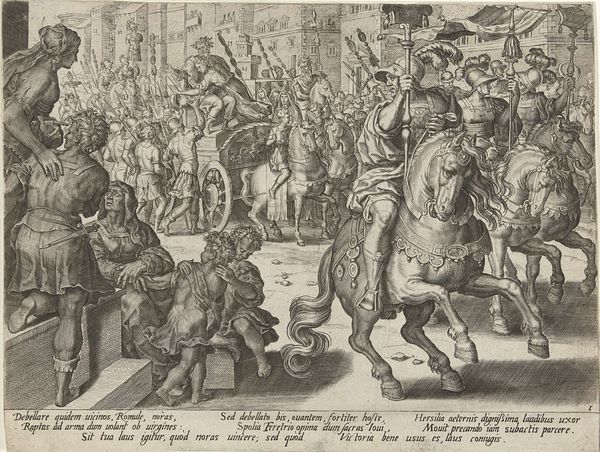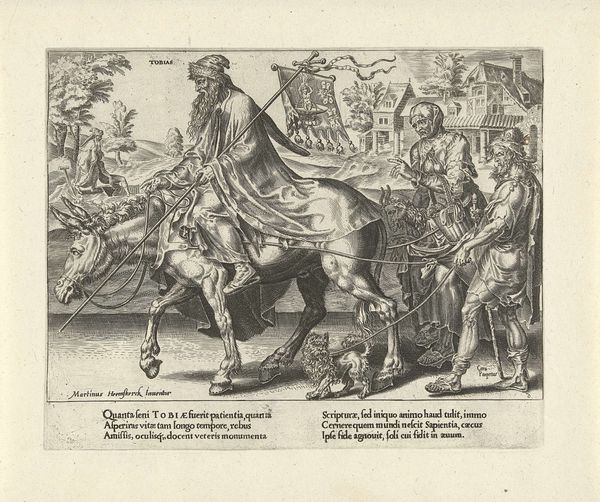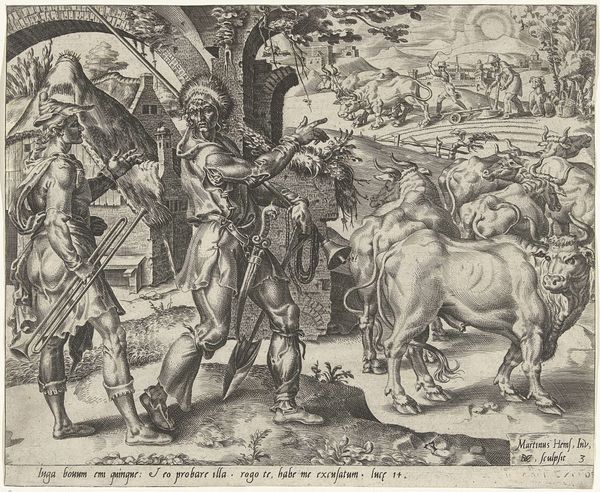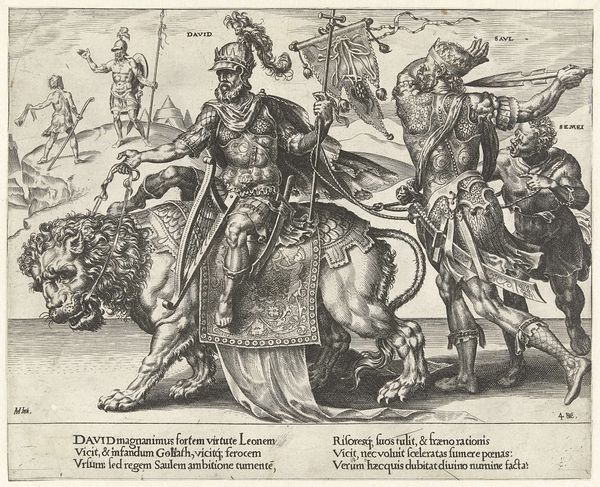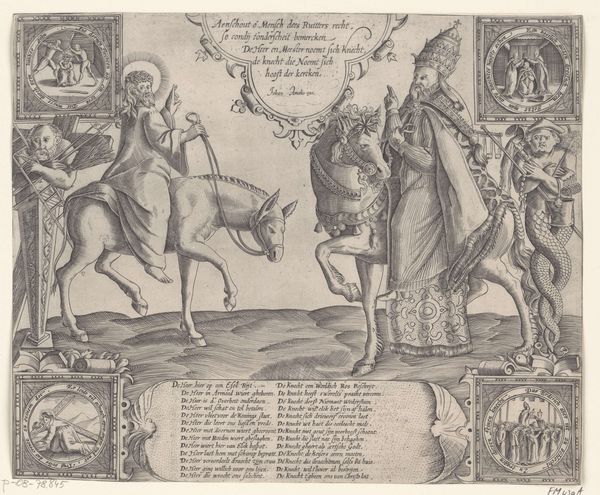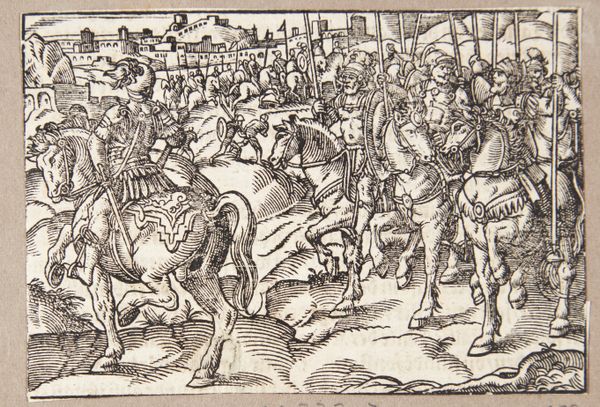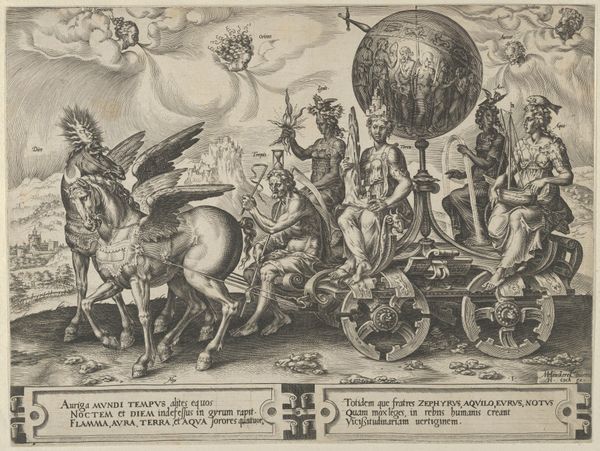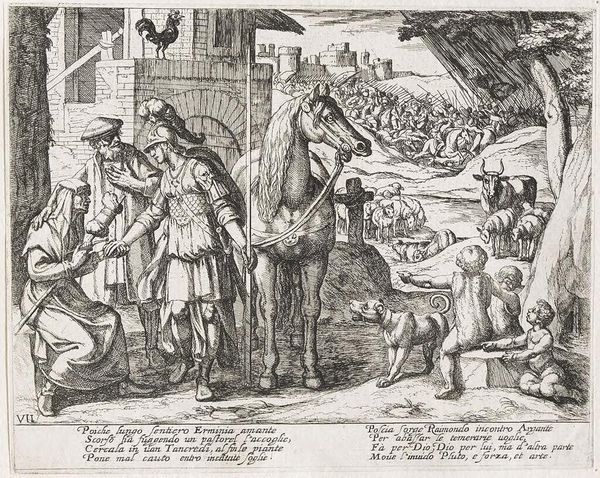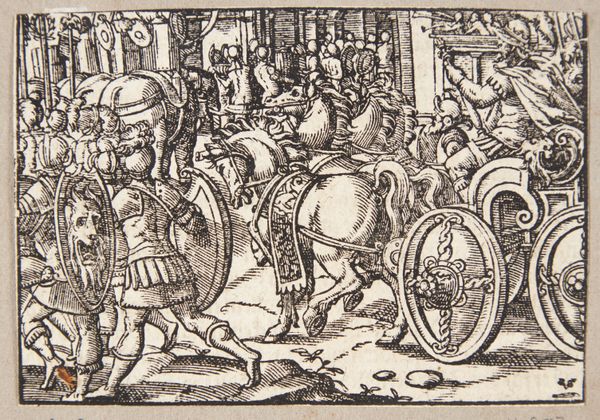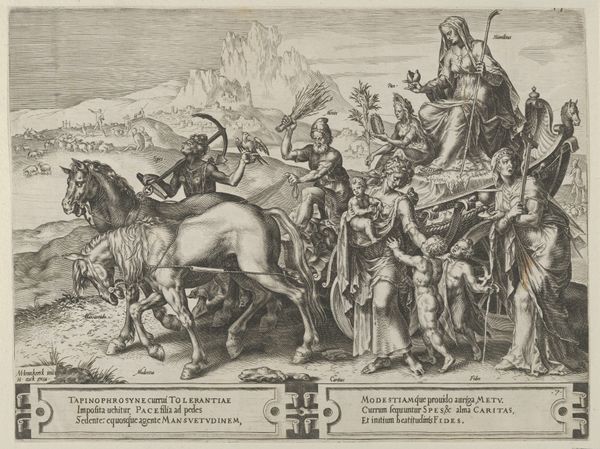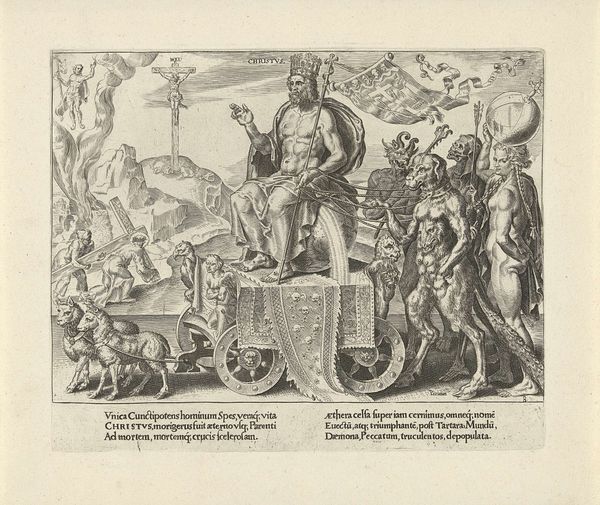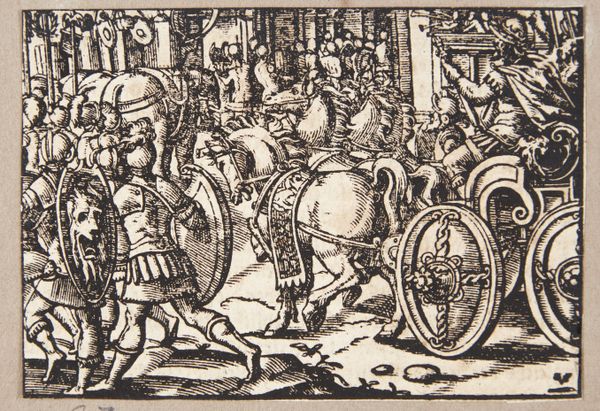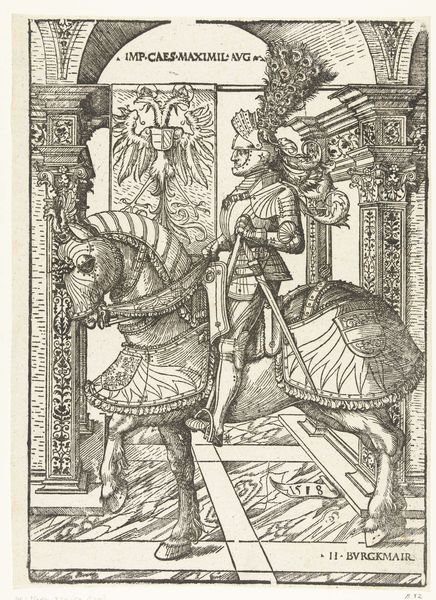
print, engraving
#
allegory
# print
#
old engraving style
#
mannerism
#
figuration
#
geometric
#
line
#
history-painting
#
engraving
Dimensions: height 206 mm, width 256 mm
Copyright: Rijks Museum: Open Domain
Curator: Look at this fascinating engraving, "Triumph of Stephen," crafted in 1559 by Dirck Volckertsz Coornhert, currently held at the Rijksmuseum. It's quite the piece of Mannerist printmaking, wouldn't you say? Editor: Intricate, yes. But the first impression is one of strange contradictions. You've got this incredibly detailed, almost rigid central figure on an elephant, while chaos and tension seem to tug at its stability from behind. What symbolic language do you read in these opposing forces? Curator: I find Coornhert is layering several political statements in this piece. Stephen, a figure who met his end through violence, rides an elephant – an animal historically associated with both wisdom and, crucially, royalty. But the men pulling the elephant look very muscular and pained, which implies that history is full of those using violence to subvert wise and royal intention. The cloud of witnessing angels is also an indictment of the acts committed. Editor: Right, the figures who we can presume are doing violence have almost classical musculature. Is this supposed to glorify brute strength? Curator: It does at first seem counterintuitive. However, in the 16th Century visual vocabulary, to give one’s enemies such robust treatment would imply they represent not the working classes, who often perpetrated physical attacks at the command of landowners, but something darker – a classical ideal perverted for evil intent, an active desire for brutality to undermine social progress. Consider the context: religious conflict was exploding all across Europe at this time. Coornhert himself was embroiled in debates around freedom of conscience. His art often functioned as an intervention, advocating for tolerance amidst strife. He used allegory to expose these moral hypocrisies in ways that resonated deeply. Editor: So you're suggesting Coornhert weaponizes classical visuality. What seemed an imposing monument, now looks more like the portrait of broken resistance, which then speaks more directly to religious upheaval? Seeing the geometric and organized detail in contrast to the emotional scene…it evokes a sense of melancholy for what has been destroyed in the name of religion. Thank you for showing me a deeper sense of struggle. Curator: Absolutely! The beauty of art like this lies in its multifaceted reading, and its connection to history allows us to unpack complex social and political struggles, in turn informing where our future path can take us. Editor: Agreed, the symbols aren't static; they keep accruing resonance. Understanding that continuity is how we build something new.
Comments
No comments
Be the first to comment and join the conversation on the ultimate creative platform.
